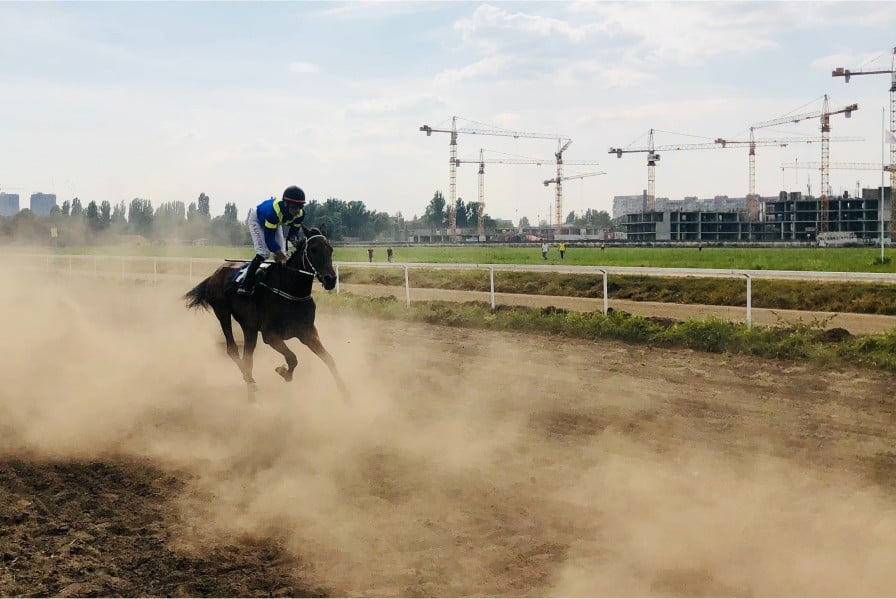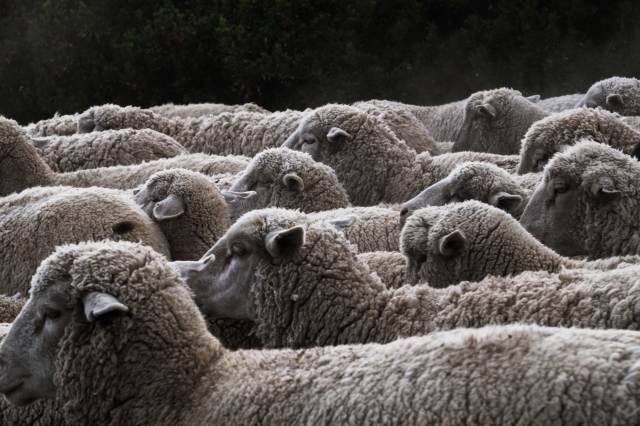Our position on regenerative animal agriculture
IPCC,1 and other independent reports,2 make clear we need a transition towards more plant-based food from a climate perspective, a nature loss perspective and an animal welfare perspective.
For example, a report commissioned by the UK government found England must reduce its meat intake to avoid ecological breakdown.3
But many are talking about regenerative animal agriculture and methane reducing technologies. Do these avoid the need to reduce consumption of animals? Here is our take based on information we have reviewed to date.
In short, regenerative animal agriculture may be a part of a sustainable food system, but we still need to eat fewer animals.
Agriculture’s contribution to the climate change and nature loss crisis
Today we face the double, interlinked emergencies of human induced climate change and nature loss. Both are a product of the fact our societies are operating in a way that breach ecological constraints. The nature loss crisis is evident in Australia – a megadiverse country and one of the most biologically rich countries in the world.4 Researchers have found that 19 Australian ecosystems met criteria to be classified as ‘collapsing’.5 Overall, the state and trend of the environment of Australia are poor and deteriorating as a result of increasing pressures from climate change, habitat loss, invasive species, pollution and resource extraction.6
Agriculture is a significant contributor to both climate change and nature loss. It is a crucial driver of climate change, responsible for around one-quarter of the world’s greenhouse gas emissions (including 40% of global methane emissions).7 And it has a massive impact on the world’s environment due to its enormous land use and contribution to land use conversion.8 Agriculture specifically has been implicated in the listing of 60% of Australia’s threatened species.9
From both a climate and nature loss perspective, it is clear we need to change the way we produce and consume food.
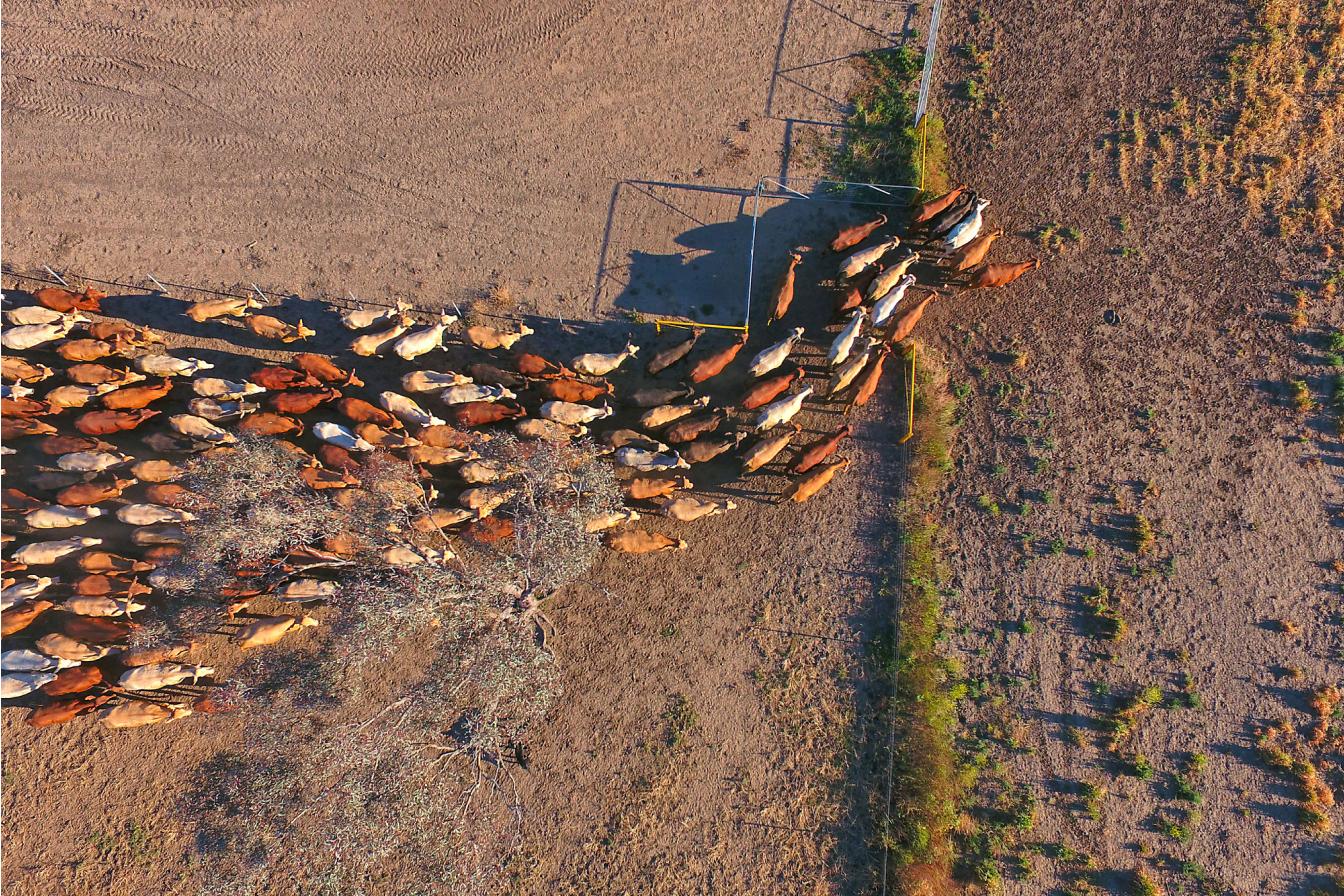
Agriculture is a significant contributor to both climate change and nature loss.
From both a climate and nature loss perspective, it is clear we need to change the way we produce and consume food.
Regenerative agriculture
Regenerative agriculture is a term that currently has no agreed definition or standard and can refer to just about any practice or combination of practices intended to conserve soil, improve agricultural yields or mitigate climate change through soil carbon-sequestration. When it comes to farming cows, the term is often used to refer to moving large herds frequently to mimic the herds of the African savannah.
Based on the information we have reviewed to date, regenerative agriculture practices do not avoid the need to reduce consumption of animals. Dietary shifts towards plant-based alternatives are the surest way to improve environmental outcomes. Here’s our rationale.
Land use and the counterfactual
Animal agriculture, particularly grazing animals on pasture, regenerative or not, takes up a significant amount of land, both directly and to produce feed for animals. Livestock grazing is the dominant land use in Australia, occupying over 50% of the continent.10 Research, that looked at food’s impacts on a global scale, suggests that if people moved from current diets to a diet that excludes animal products, the world could reduce food’s land use by between 2.8 to 3.3 billion ha (a 76% reduction).11 Conversely, if grazing ruminant systems were to supply all our projected meat demand we would have to further expand grazing land into forest and intensify existing grasslands through the use of nutrient inputs, which among other things, would cause CO2 release and increases in methane and nitrous oxide emissions.12
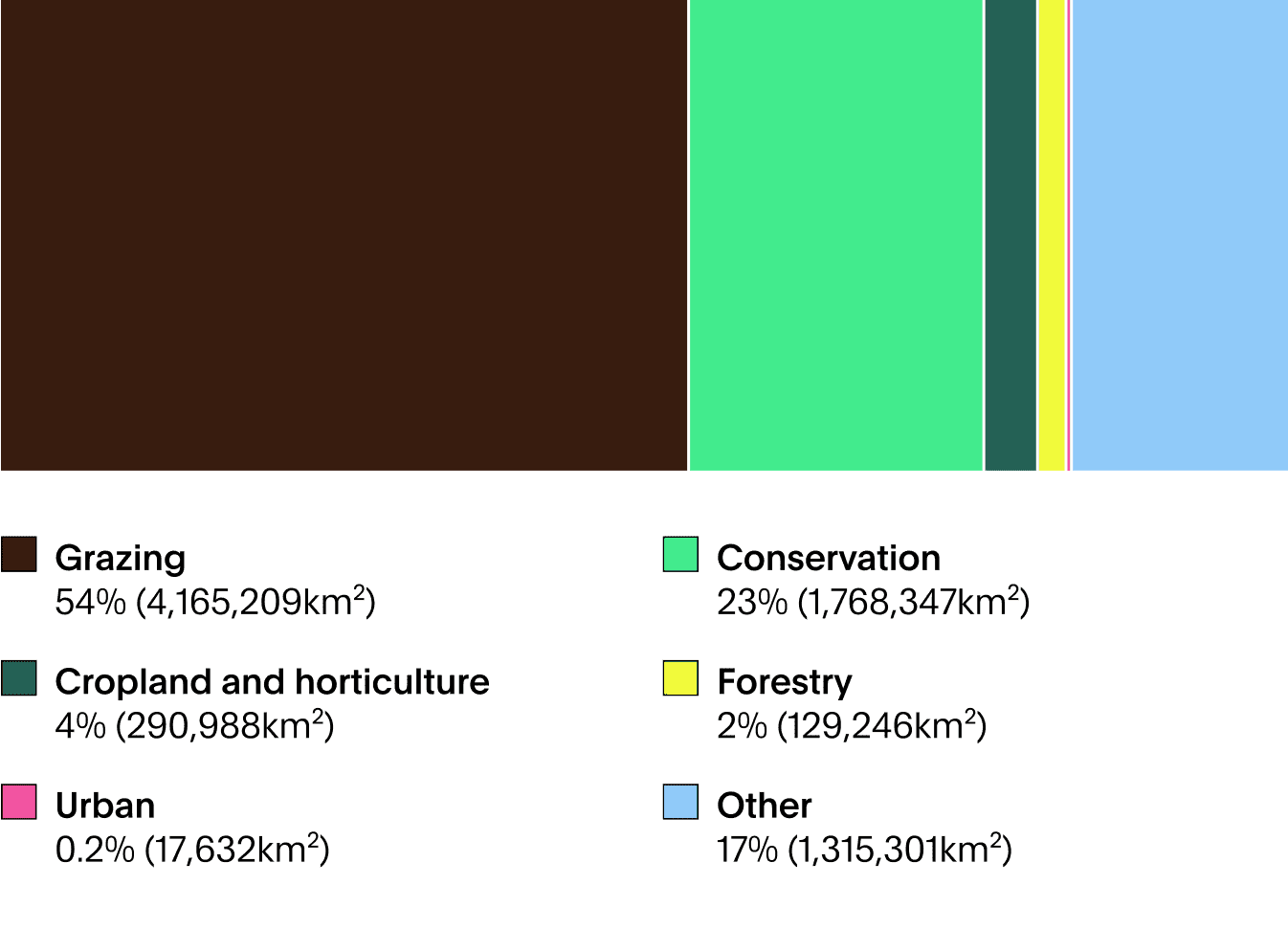
Source: Climateworks Centre. Land Use Futures, viewed March 2023.
So while regenerative agriculture may have the potential to improve the condition of the land relative to traditional or non-regenerative grazing, or even in relation to monocrop agriculture, we do not think that is the appropriate test. We need to think about whether a regenerative farm is making best use of the land considering the potential for alternative uses such as carbon sinks and re-establishing native habitat. When assessing regenerative agriculture against this counterfactual, we see that dedicating land to regenerative animal agriculture foregoes huge opportunities to draw down carbon and protect biodiversity – opportunities we cannot afford to miss out on:
-
the land that could be spared through a transition to a plant based diet could remove 8.1 billion metric tons of CO2 from the atmosphere each year over 100 years.13
-
rewilded land outperforms grazing land for biodiversity. In fact a meta-analysis concluded that grazing decreases animal abundance and diversity,14 and another found that grazing favours certain plants and animals while harming others.15 This may be particularly the case in Australia where our unique ecosystems evolved without any hard hoofed animals and seems to respond better when livestock are removed altogether.16
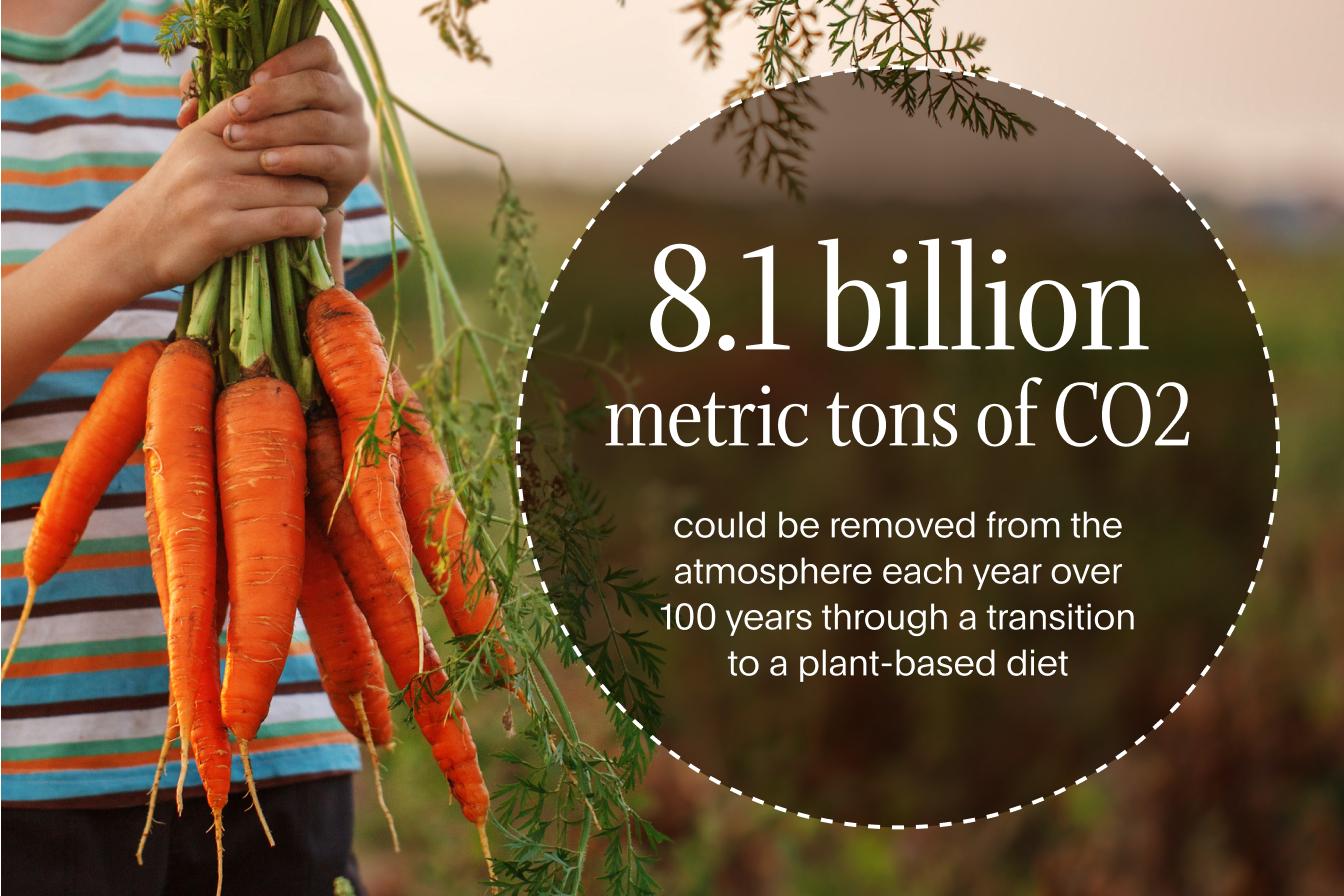
A huge opportunity we cannot afford to miss out on.
We also need to think about the extent to which that use of land is pushing us to further expand food production’s land use footprint and contribute to more ecosystem conversion (which from both a climate and biodiversity perspective, we cannot afford to do). Grazing ruminants have historically been one of the major drivers of deforestation.17 We see this play out in Australia today: 93% of deforestation and land clearing (including of threatened species’ habitat) that took place in the five years between 2014/15 and 2018-19 in QLD was for conversion to pasture,18 contributing to Australia’s ignoble position as the worst deforesting nation in the “developed” world.19
Some advocates for animal agriculture point to the fact that there are areas of land not suitable for producing food other than through grazing. What the above research shows is that we do not need to use all this land to produce food for humans. And from a climate and biodiversity perspective, that’s a great thing. It means we have more land available to sequester carbon and can give significant amounts of land back to the other beings with which we share this planet, while still growing enough food for people. Wildlife can rebound if we reduce agricultural land use and allow natural lands to restore.20
It is questionable whether regenerative agriculture will ever be able to yield the carbon sequestration some proponents are promising.
There is still limited agreement among experts on the ability of regenerative agriculture to yield the carbon sequestration capacity many are hoping for. Regenerative grazing’s impacts vary depending on the context, scale of production, and rotation intensity. Grass-fed systems are typically more emissions intensive due to cows’ diets, productivity, and lifespans.21 Even if regenerative animal agriculture’s carbon footprint could be net negative through soil carbon sequestration in some situations, its potential as a climate solution may be small, time-limited, reversible and substantially outweighed by the greenhouse gas emissions they generate:22
- research suggests that at an aggregate level, the overall potential carbon sequestration from regenerative agriculture – depending on the level of ambition – would offset 20–60% of emissions from grazing systems; 4–11% of total livestock emissions; and between 0.6 and 1.6% of total annual anthropogenic greenhouse gas emissions.
- soil carbon storage is reversible and is dependent on several environmental factors. A shift in management practice can also cause gains to be reversed as can natural factors such as drought. Poor grazing management – which is prevalent – causes soil carbon to be released.
- even in the best case scenario, regenerative agriculture’s ability to offset farming emissions may only be temporary while the production of those emissions are not. Soils reach carbon equilibrium – carbon flows in match carbon flows out – within a few decades, after which no more carbon is accumulated.
Much is often made of ruminants’ role in fertilising soils through the nitrogen in their manure, thereby helping plants grow and deposit more carbon in the soil. However, animals – including grazing ruminants – are not a source of new nitrogen.23 They redeposit the nitrogen previously already embodied in the plant matter grown locally, or imported from elsewhere in animal feed. And the nitrogen cycle is leaky. Nitrogen is exported in the form of milk, meat and animal carcass, and there will also be losses to the air and waterways.
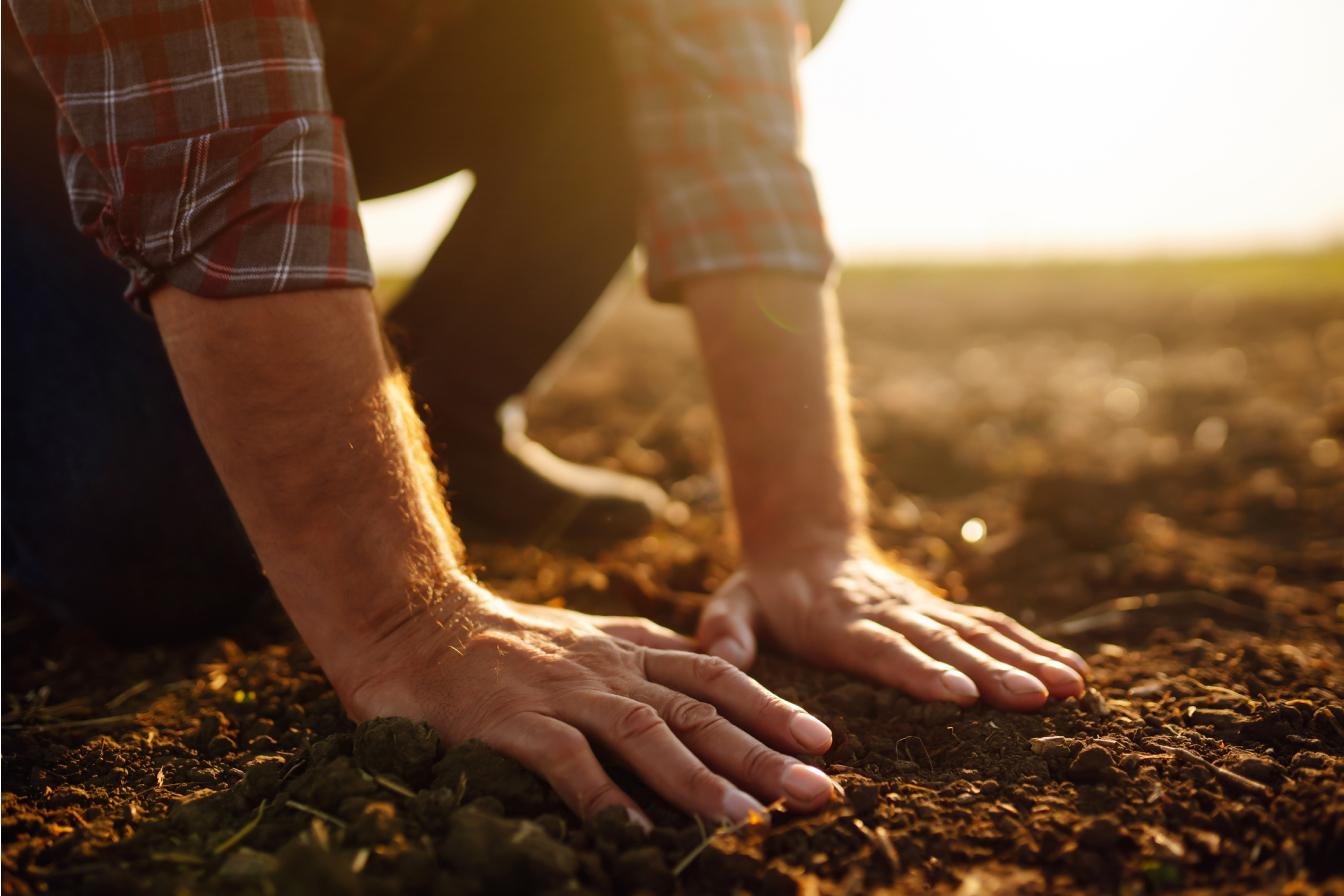
Poor grazing management causes soil carbon to be released.
Our concerns with methane-inhibiting technologies
Animal derived food products have a disproportionate environmental footprint to plant-based counterparts.24 CO2 equivalent emissions from most plant-based products are as much as 10-50 times lower than most animal-based products.25 This is in part due to methane production from enteric fermentation in the digestive system of ruminants (and also in part due to deforestation, discussed above).
Methane is a short lived but highly potent greenhouse gas, and it contributes to global warming in the same way irrespective of whether it is produced from fossil fuels or from agriculture. Reducing methane is critical to address climate change.26 The Paris Agreement’s 1.5 degree target cannot be achieved without reducing methane emissions. Because of its potency, lower methane concentrations would rapidly reduce the rate of warming, making methane mitigation one of the best ways of limiting warming in this and subsequent decades, and help avoid triggering dangerous climate feedback loops.
There are several methane reducing technologies in development intended to reduce the methane emitted from the digestive systems of cows. They include feed supplements (including seaweed supplements), vaccines, biopolymer devices to insert into the stomachs of cows, selectively breeding animals that emit less methane and even masks intended to be worn by cows to neutralise the methane they emit.
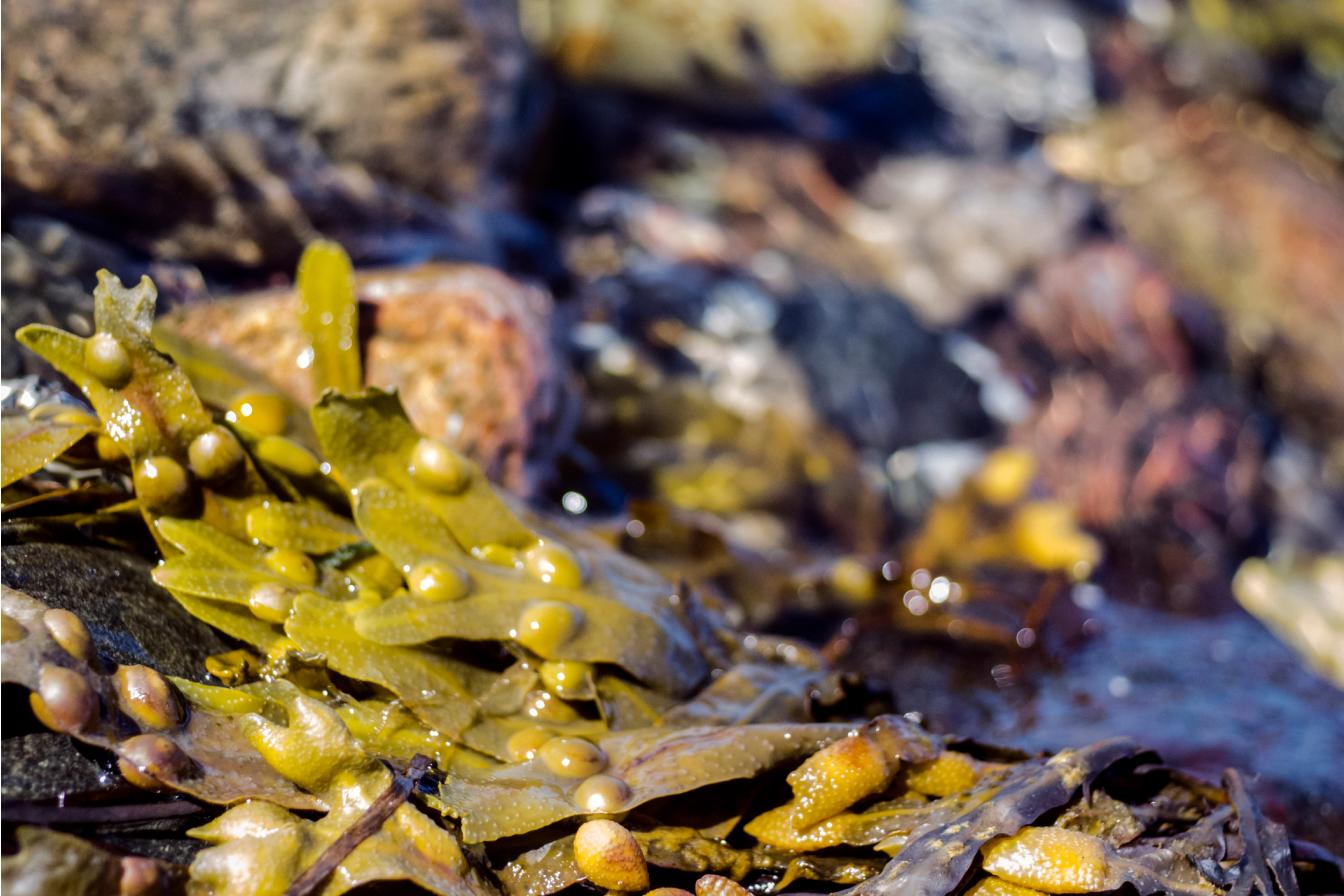
Feed supplements are very difficult to incorporate into a grazing cow’s diet.
We see a few problems with relying on methane-inhibiting technologies to sustain current rates of consumption of animal-derived products. First, as far as we are aware, none have been proven to be commercially viable at scale. Some, like feed supplements, are very difficult to incorporate into a grazing cow’s diet. We are also concerned about the unintended consequences of modifying cows’ biology to meet human purposes, including known and unknown animal welfare consequences. Is it ethical to conduct these experiments on animals when we can get our nutrients in other ways?
We are also concerned about the unintended consequences of modifying cows’ biology to meet human purposes, including known and unknown animal welfare consequences. Is it ethical to conduct these experiments on animals when we can get our nutrients in other ways?
What about the harms of monoculture cropping?
Monoculture cropping allows us to produce food efficiently but perhaps not sustainably. Monoculture cropping often harms biodiversity and reduces soil quality. But this also points to the need to reduce animal agriculture. We produce more food to feed farmed animals than the amount of food we extract from them. For example:
- In the US about 127.4m acres of cropland is used to produce livestock feed, while only 77.3m is used to produce food eaten by humans directly.27
- More than three quarters (77%) of global soy is fed to animals for meat and dairy production. Most of the rest is used for biofuels, industry or vegetable oils. Just 7% of soy is used directly for human food products such as tofu, soy milk, edamame beans, and tempeh.28
A reduction in consumption of animals would help reduce the impacts of monoculture cropping because even with the necessary increase in consumption of plant-based foods, we would still need to produce less food overall, which means less monoculture cropping.
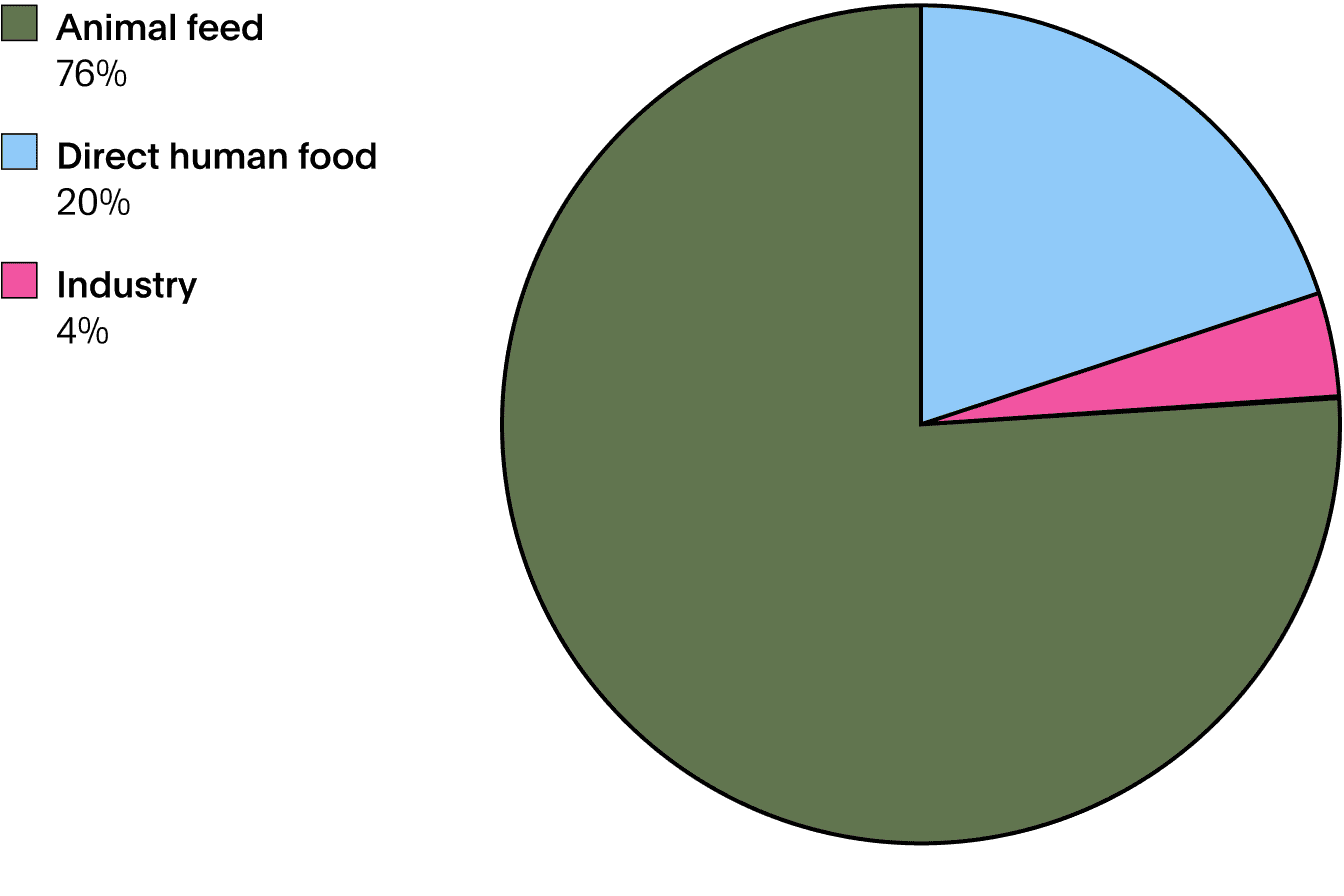
Source: Food Climate Resource Network (FCRN). University of Oxford; and USDA PSD Database. Viewed March 2023.
Aren’t plant-based foods processed and unnatural?
While it may be possible to obtain necessary nutrients from a wholefood plant-based diet, realistically, we are unlikely to shift enough of the world’s population to this diet. We think alternative proteins have a role in safeguarding everyone’s future by meeting consumers where they are at and giving them sustainable options that meet their taste, cultural and price point requirements.
But we should also remember that animal agriculture is not necessarily 'natural' either. For example, as a product of selective breeding, pastured chickens of the past look nothing like the modern broiler chicken; dairy cows are routinely artificially inseminated to induce pregnancy so their bodies produce milk, and through selective breeding can produce several times the amount of milk they would naturally.
The methane inhibiting technologies discussed above shows that animal agriculture will also need to move further away from what is ‘natural’ if we are to avoid the worst effects of climate change.
Is regenerative agriculture better for animal welfare?
Some regenerative agriculture practices may have the potential to reduce animal suffering compared to other forms of animal agriculture. But this won’t always be the case, and it won’t be the case compared to sustainable non-animal agriculture. Increased grazing across vast regions exposed to periodic extreme drought and flood can bring periodic suffering of more animals during those drought and flood conditions. Welfare concerns that arise in transporting animals across large distances, and slaughtering animals at a commercial scale, persist regardless of production systems.
We don't invest in conventional animal agriculture companies. We use the term conventional animal agriculture to mean current and mainstream forms of animal agriculture including free range and organic production. We may invest in production of oysters, mussels, and other bivalves for which there is limited evidence of sentience and where environmental impacts of production are relatively small. We assess the harm to animals, the environment (including climate) and to people (e.g. antibiotic use) caused by conventional animal agriculture as unnecessary because lower-impact, balanced plant-based diets can sustain healthy human life. There are exceptions to our investment exclusions. We think a company with positive products and services can be an ethical investment even though it earns some revenue from a negative product or activity. More information about our revenue tolerances is available here (refer to heading “Food which is unsustainable”).
-
Section 5.5.2.1 Mitigation Potential of Different Diets in IPCC 2019, Climate Change and Land: an IPCC special report on climate change, desertification, land degradation, sustainable land management, food security, and greenhouse gas fluxes in terrestrial ecosystems [P.R. Shukla, J. Skea, E. Calvo Buendia, V. Masson-Delmotte, H.-O. Pörtner, D. C. Roberts, P. Zhai, R. Slade, S. Connors, R. van Diemen, M. Ferrat, E. Haughey, S. Luz, S. Neogi, M. Pathak, J. Petzold, J. Portugal Pereira, P. Vyas, E. Huntley, K. Kissick, M. Belkacemi, J. Malley, (eds.)]. Available at: https://www.ipcc.ch/site/assets/uploads/2019/11/SRCCL-Full-Report-Compiled-191128.pdf (accessed: 6 April 2023). Creutzig, F., J. Roy, P. Devine-Wright, J. Díaz-José, F.W. Geels, A. Grubler, N. Maïzi, E. Masanet, Y. Mulugetta, C.D. Onyige, P.E. Perkins, A. Sanches-Pereira, E.U. Weber (2022) Demand, services and social aspects of mitigation. In IPCC, 2022: Climate Change 2022: Mitigation of Climate Change. Contribution of Working Group III to the Sixth Assessment Report of the Intergovernmental Panel on Climate Change [P.R. Shukla, J. Skea, R. Slade, A. Al Khourdajie, R. van Diemen, D. McCollum, M. Pathak, S. Some, P. Vyas, R. Fradera, M. Belkacemi, A. Hasija, G. Lisboa, S. Luz, J. Malley, (eds.)]. Available at: https://www.ipcc.ch/report/ar6/wg3/downloads/report/IPCC_AR6_WGIII_FullReport.pdf (accessed: 6 April 2023).
-
See e.g. Chatham House, 2021 Food system impacts on biodiversity loss. Available at: https://www.chathamhouse.org/2021/02/food-system-impacts-biodiversity-loss/03-key-levers-food-system-redesign (accessed: 6 April 2023); Prof Walter Willett, MD, Prof Johan Rockström, PhD, Brent Loken, PhD, Marco Springmann, PhD, Prof Tim Lang, PhD, Sonja Vermeulen, PhD, et al, (2019) Food in the Anthropocene: the EAT-Lancet Commission on healthy diets from sustainable food systems, The Lancet Commissions Volume 393, Issue 10170, p447-492, February 02, 2019. Available at: https://www.thelancet.com/journals/lancet/article/PIIS0140-6736(18)31788-4/fulltext#articleInformation (accessed: 6 April 2023).
-
The National Food Strategy: The Plan, July 2021 https://www.nationalfoodstrategy.org/the-report/ (accessed: 6 April 2023).
-
Australian Government, Department of Climate Change, Energy, the Environment and Water (2021) Protecting Biodiversity. Available at: https://www.dcceew.gov.au/environment/land/nrs/about-nrs/protecting-biodiversity (accessed: 6 April 2023); Australian Conservation Foundation, Australia is a megadiverse country - what does megadiverse actually mean? Available at: https://www.acf.org.au/australia-is-a-megadiverse-country (accessed: 6 April 2023).
-
Dana M. Bergstrom, Barbara C. Wienecke et al, (2021) Combating ecosystem collapse from the tropics to the Antarctic Global Change Biology Volume27, Issue 9 May 2021 Pages 1692-1703. Available at: https://onlinelibrary.wiley.com/doi/10.1111/gcb.15539 (accessed: 6 April 2023).
-
Cresswell ID, Janke T & Johnston EL (2021). Australia state of the environment 2021: overview, independent report to the Australian Government Minister for the Environment, Commonwealth of Australia, Canberra. DOI: 10.26194/f1rh-7r05. Available at: https://soe.dcceew.gov.au/sites/default/files/2022-07/soe2021-overview.pdf (accessed: 6 April 2023).
-
Our World in Data, Food production is responsible for one-quarter of the world’s greenhouse gas emissions. Available at: https://ourworldindata.org/food-ghg-emissions (accessed: 6 April 2023); Climate and Clean Air Coalition (CCAC) , United Nations Environment Programme (UNEP) (2021) Global Methane Assessment. Available at: https://www.ccacoalition.org/en/resources/global-methane-assessment-full-report (accessed: 6 April 2023).
-
Hannah Ritchie and Max Rose (2019) Land Use, Our World in Data. Available at: https://ourworldindata.org/land-use (accessed: 6 April 2023).
-
Cresswell ID, Janke T, Johnston EL (2021). Overview: People. In: Australia State of the environment 2021, Australian Government Department of Agriculture, Water and the Environment, Canberra. Available at: https://soe.dcceew.gov.au/overview/pressures/people#land-clearing (accessed: 6 April 2023).
-
Climateworks (2019) Australia’s Land Use. Available at: https://climateworkscentre.org/land-use-futures/australias-land-use/ (accessed: 6 April 2023).
-
J Poore and T Nemecek (2019) Reducing food’s environmental impacts through producers and consumers, Science 360, 987-992 (2018) Erratum 22 February 2019. Available at: https://josephpoore.com/Poore%20and%20Nemecek%20(2018)%20Reducing%20foods%20environmental%20impacts%20through%20producers%20and%20consumers.pdf (accessed: 6 April 2023).
-
Tara Garnett, Cecile Godde et al (2017) Grazed and Confused, Food Climate Research Network. Available at: https://www.oxfordmartin.ox.ac.uk/downloads/reports/fcrn_gnc_report.pdf (accessed: 6 April 2023).
-
J Poore and T Nemecek (2019) Reducing food’s environmental impacts through producers and consumers, Science 360, 987-992 (2018) Erratum 22 February 2019. Available at: https://josephpoore.com/Poore%20and%20Nemecek%20(2018)%20Reducing%20foods%20environmental%20impacts%20through%20producers%20and%20consumers.pdf (accessed: 6 April 2023).
-
Alessandro Filazzola, Charlotte Brown, Margarete A. Dettlaff, Amgaa Batbaatar, Jessica Grenke, Tan Bao, Isaac Peetoom Heida, James F. Cahill Jr (2020) The effects of livestock grazing on biodiversity are multi-trophic: a meta-analysis, Ecology letters Volume 23, Issue 8 August 2020. Available at: https://onlinelibrary.wiley.com/doi/abs/10.1111/ele.13527 (accessed: 6 April 2023).
-
Craig D Morris (2021) How biodiversity-friendly is regenerative grazing? Front. Ecol. Evol., 23 December 2021. Available at: https://www.frontiersin.org/articles/10.3389/fevo.2021.816374/full (accessed: 6 April 2023).
-
Bush Heritage Australia (undated) Reducing grazing pressure. Available at: https://www.bushheritage.org.au/what-we-do/landscape-management/grazing#:~:text=Annual%20grasses%20can%20fail%20to,frequently%20arrive%20with%20grazing%20stock (accessed: 6 April 2023).
-
Tara Garnett, Cecile Godde et al (2017) Grazed and Confused, Food Climate Research Network. Available at: https://www.oxfordmartin.ox.ac.uk/downloads/reports/fcrn_gnc_report.pdf (accessed: 6 April 2023).
-
Martin Taylor and Rachel Fletcher (undated) What’s at steak: Deforestation for beef widespread in Queensland. Available at: https://assets.nationbuilder.com/queenslandconservation/pages/5457/attachments/original/1670195862/QCC23300.QCC_Deforestation_Report__V5.pdf?1670195862 (accessed: 6 April 2023).
-
WWF (2021) Australia remains the only developed nation on the list of global deforestation fronts. Available at: https://www.wwf.org.au/news/news/2021/australia-remains-the-only-developed-nation-on-the-list-of-global-deforestation-fronts#gs.i39d88 (accessed: 6 April 2023).
-
Hannah Ritchie (2022) Wild mammals are making a comeback in Europe thanks to conservation efforts. Available at: https://ourworldindata.org/europe-mammal-comeback (accessed: 6 April 2023).
-
Ashley Broocks, Emily Andreini, Megan Rolf, Sara Place (2017) Carbon footprint comparison between grass – and grain – finished beef. Available at: https://extension.okstate.edu/fact-sheets/carbon-footprint-comparison-between-grass-and-grain-finished-beef.html (accessed: 6 April 2023). See also, The National Food Strategy: The Plan, July 2021 https://www.nationalfoodstrategy.org/the-report/ (accessed: 6 April 2023).
-
Tara Garnett, Cecile Godde et al (2017) Grazed and Confused, Food Climate Research Network. Available at: https://www.oxfordmartin.ox.ac.uk/downloads/reports/fcrn_gnc_report.pdf (accessed: 6 April 2023). See also YouTube video explanation: https://www.youtube.com/watch?v=nub7pToY3jU (accessed: 6 april 2023).
-
Tara Garnett, Cecile Godde et al (2017) Grazed and Confused, Food Climate Research Network. Available at: https://www.oxfordmartin.ox.ac.uk/downloads/reports/fcrn_gnc_report.pdf (accessed: 6 April 2023).
-
Hannah Ritchie, Pablo Rosado and Max Roser (2022) Environmental impacts of food production. Available at: https://ourworldindata.org/environmental-impacts-of-food#citation (accessed: 6 April 2023).
-
Hannah Ritchie (2019) Food production is responsible for one-quarter of the world’s greenhouse gas emissions. Available at: https://ourworldindata.org/food-ghg-emissions (accessed: 6 April 2023).
-
Climate and Clean Air Coalition (CCAC) , United Nations Environment Programme (UNEP) (2021) Global Methane Assessment. Available at: https://www.ccacoalition.org/en/resources/global-methane-assessment-full-report (accessed: 6 April 2023).
-
Dave Merrill and Lauren Leatherby (2018) Here’s how America uses its land, Bloomberg. Available at: https://www.bloomberg.com/graphics/2018-us-land-use/?leadSource=uverify%20wall (accessed: 6 April 2023).
-
Hannah Ritchie and Max Roser (2021) Forests and Deforestation. Available at: https://ourworldindata.org/soy#citation (accessed: 6 April 2023).


